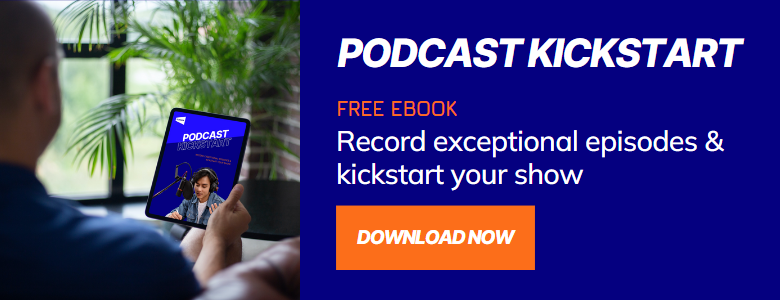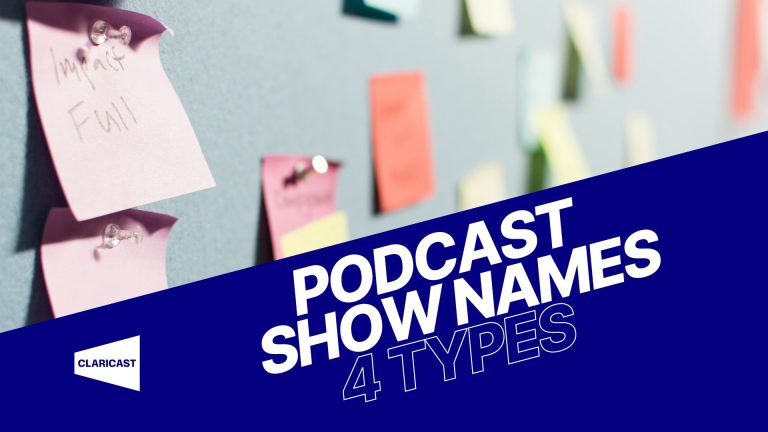There are dozens of file formats that audio can be saved as, but there are only a few that you really need to know about when it comes to podcasts. It’s important to know which format you should be using and how they affect your audio. Getting the right format means that your listener gets a better listening experience which will help to grow your podcast. It also means you’ll be able to upload your files to your podcast host without any headaches. Find out what the best podcast file format to use is in this guide.

Best Podcast File Format for Recording
You’ll likely be handling more than one file format throughout the whole production process. The file format that you record your podcast in will likely be different from the one that you export and upload as.
When recording your podcast, it’s important to record in the highest quality possible. High quality audio files contain more data, Meaning you’ll have a more accurate representation of the sound you’ve recorded. A higher-quality recording means more scope in the post-production stage (more on that later) and a better listener experience.
For this reason, you should record your podcast in an uncompressed file format such as .WAV. The .WAV (or wave) format recreates your audio in digital format without changing the sound or shrinking the file size. This means that you’re getting the best quality possible. The .AIFF format is another option for uncompressed audio, but some software does not allow you to record in this format – so you can just stick with .WAV.


Your software may allow you to choose what sample rate and bit depth you record your audio at, as well. If it does, I suggest choosing 44.1 kHz and 24-bit. These settings will give you the highest quality while keeping your files from getting too large. Click if you’d like to know more about sample rate or bit depth.
In addition, it’s best to record each individual speaker to a single, mono file. During the exporting stage these individual mono files will be combined into a single, stereo file.
Best Podcast File Format for Uploading
Now you have a high-quality, uncompressed .WAV file (or two!). This is perfect for editing and mixing. If your recording needs any restorative work in the editing stage (e.g. reducing noise, clicks), this can reduce the sound quality. If you’ve already dropped the sound quality by recording to a compressed file format, such as .MP3, these edits may result in more noticeable drops in quality.
When it’s time to export the final master file to be uploaded to your podcast host, the audio can be compressed to a smaller file format.
The best thing to do is to export to a format that your podcast host (e.g. Buzzsprout, Anchor) and all of the podcast platforms (e.g. iTunes, Spotify) will accept. Ideally, you don’t want the file to be too large either, As some hosts have size limits, too. And finally, you want to ensure that the sound quality is retained as much as possible.
For these reasons, I recommended exporting your podcast to a stereo .MP3 file with a bit rate of 128 kbps. All major podcast platforms and hosts accept MP3s, whereas certain other formats aren’t so widely accepted. Selecting a bit rate of 128 kbps will also ensure that the file size doesn’t breach any limits, while keeping a sufficient quality for the listeners. Lower bit rates may cause the quality to noticeably drop.
You may also consider exporting a 16-bit, 44.1 kHz .WAV file as well, so that you have a full quality version as a backup.
Summing Up
To ensure the highest sound quality, record your podcasts in .WAV format with a sample rate of 44.1 kHz and a bit depth of 24-bit.
To keep your podcast host happy and ensure a smooth experience, export your podcasts to a stereo, 128 kbps .MP3 file.
Some podcasters/engineers prefer to export separate files for different hosts and platforms. The settings in this guide, though, will ensure that you get a file suitable for all hosts and platforms. And unless you’re working with an agency that wants separate versions for each platform, the .MP3 master will be just fine.





